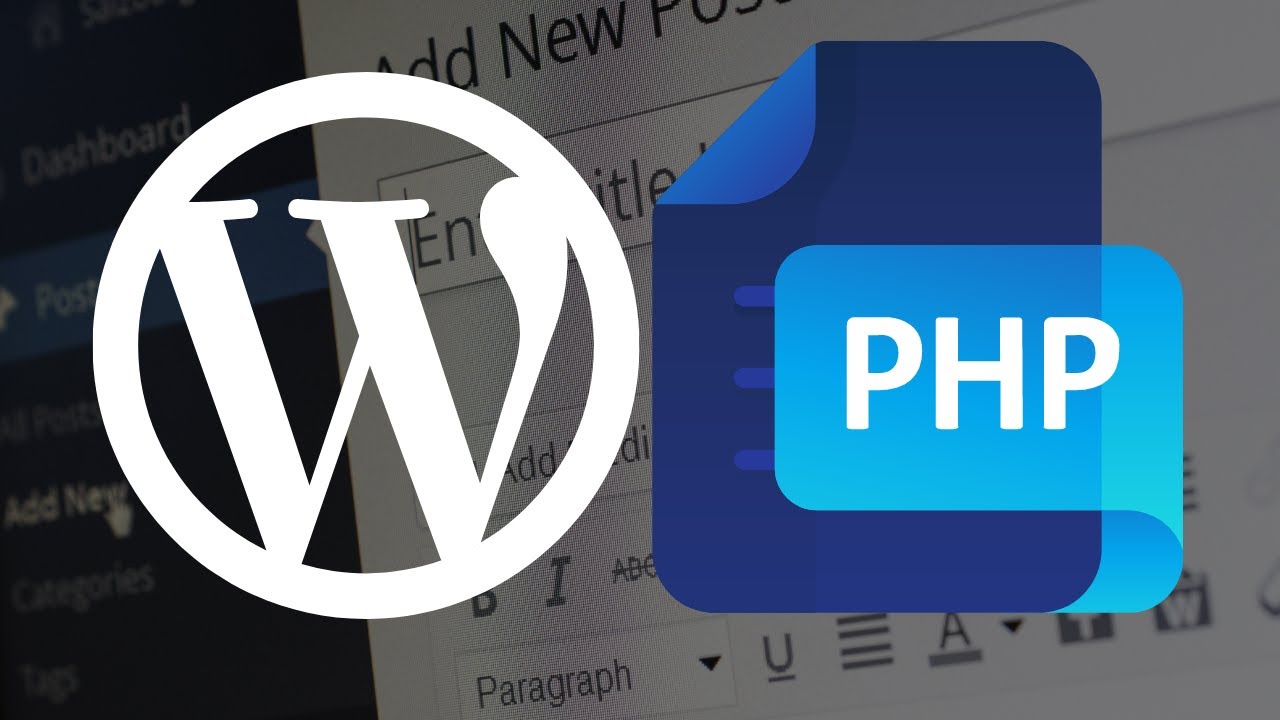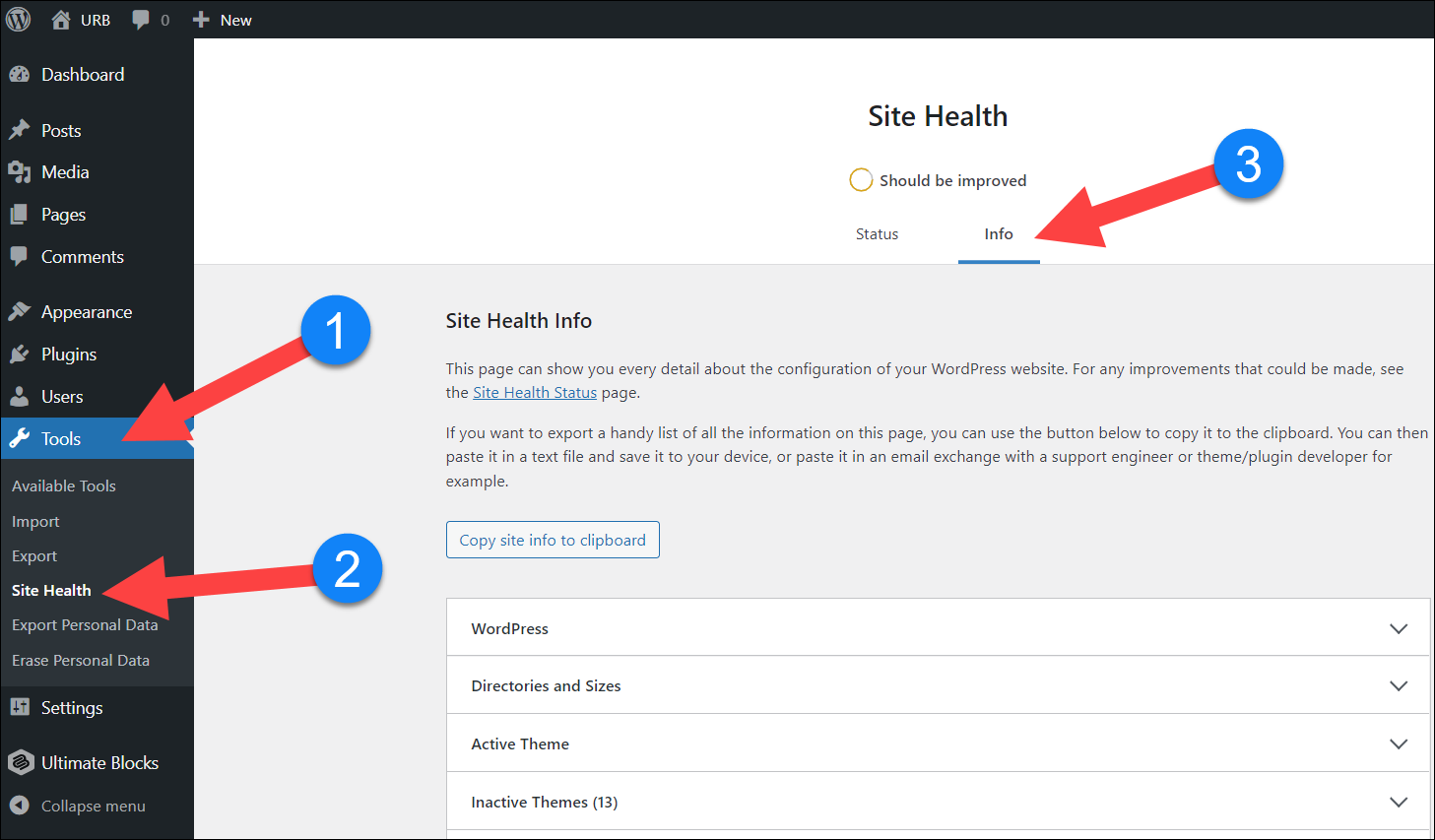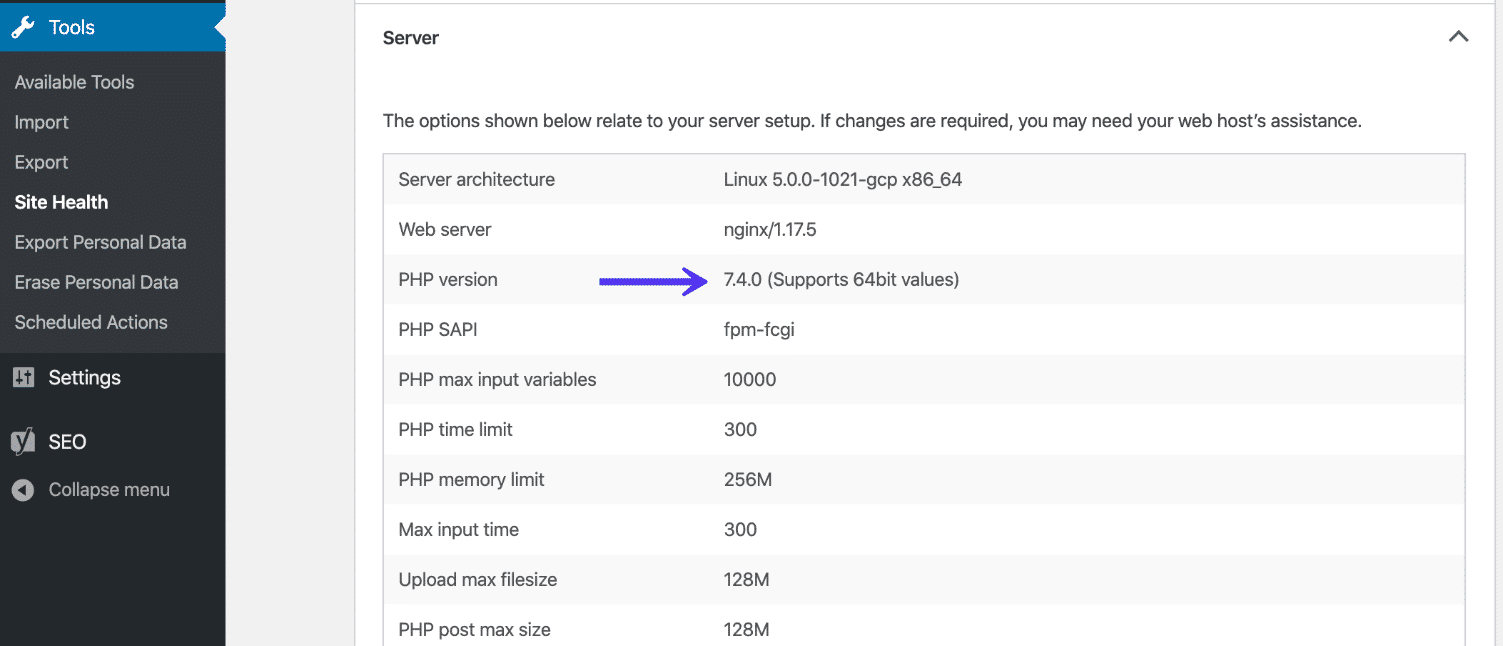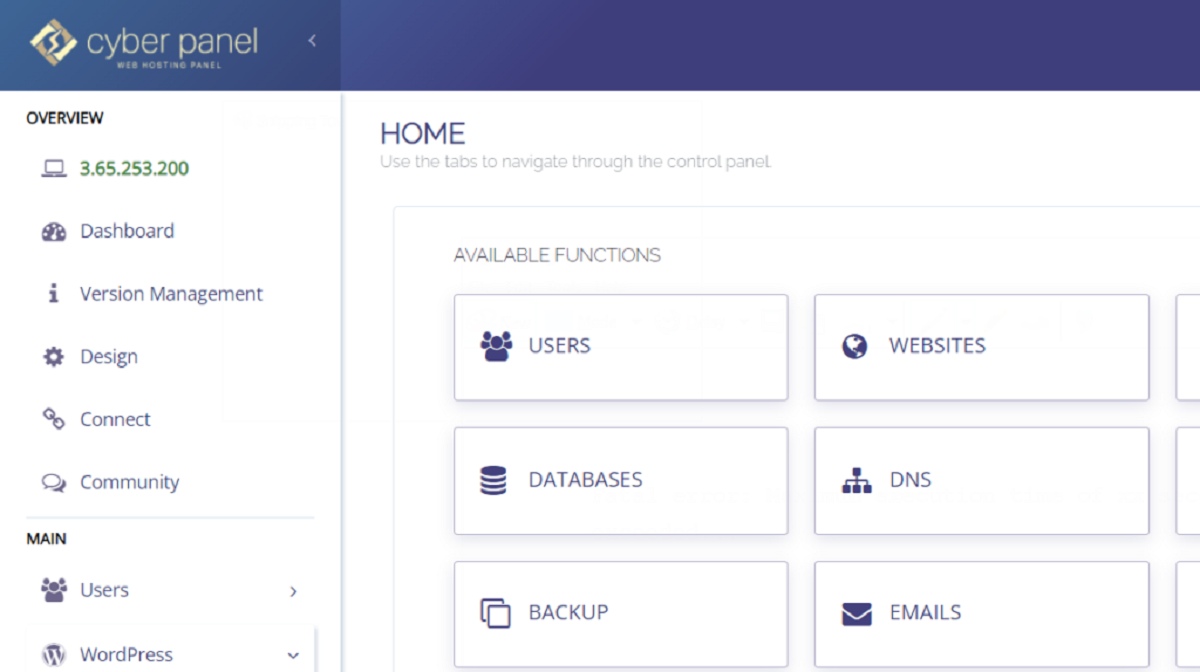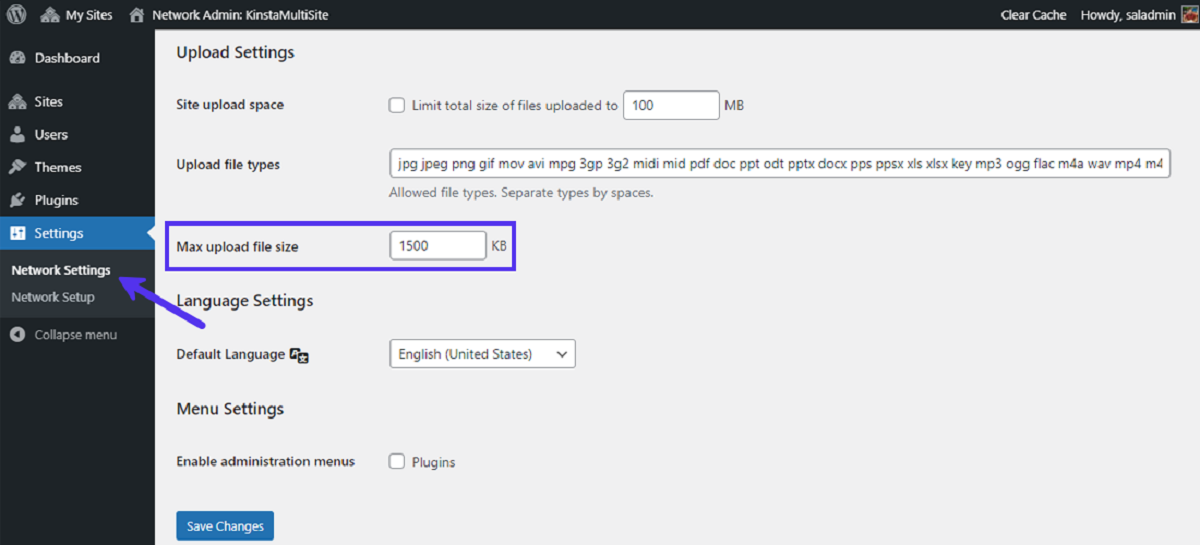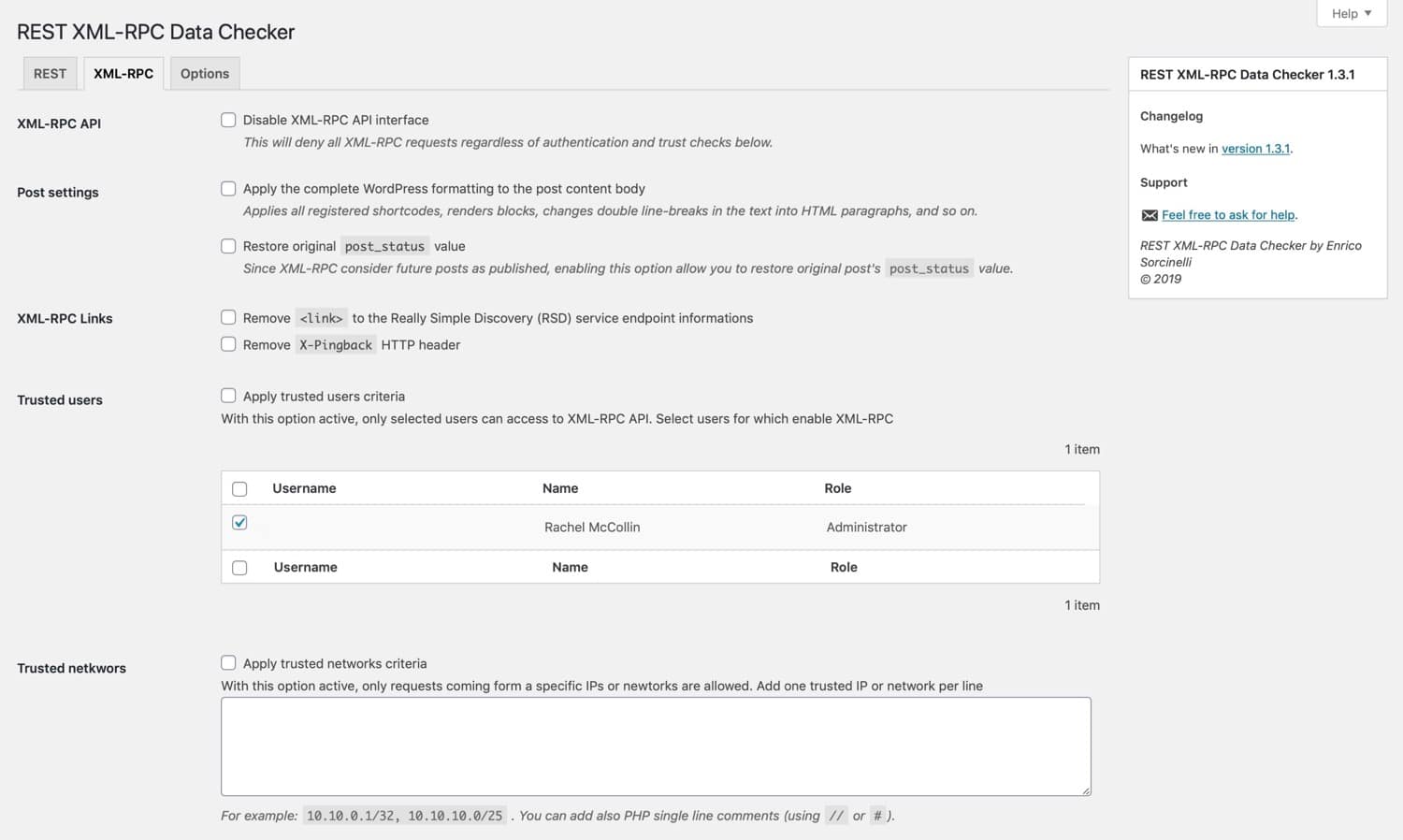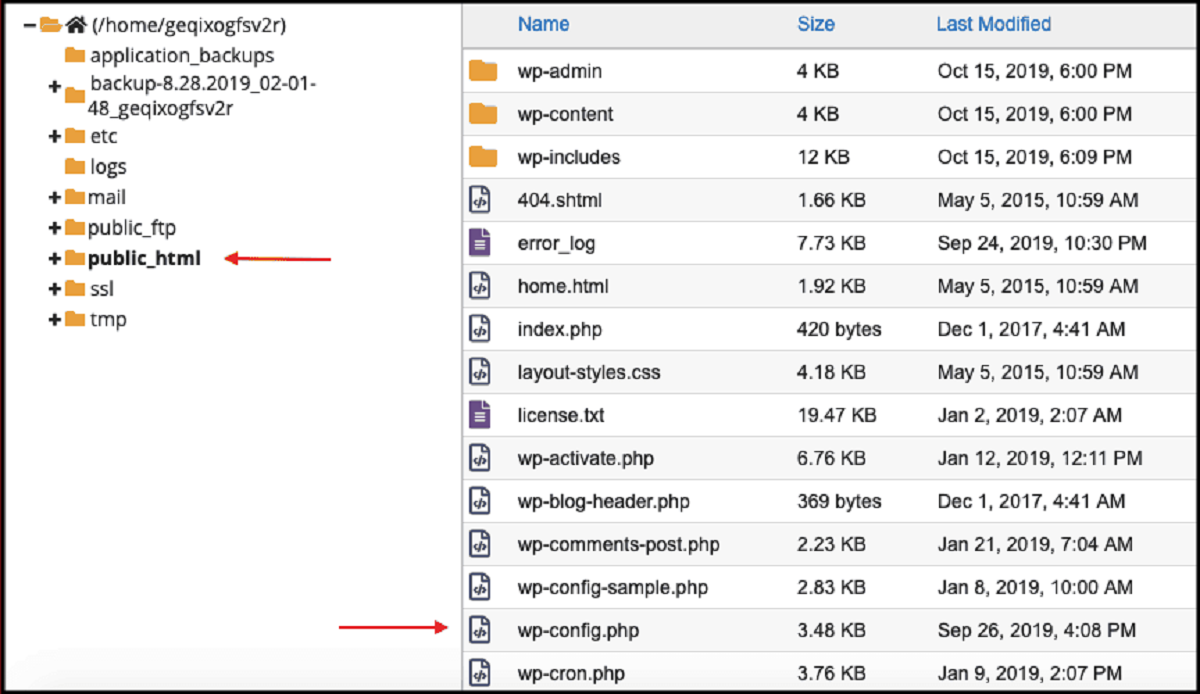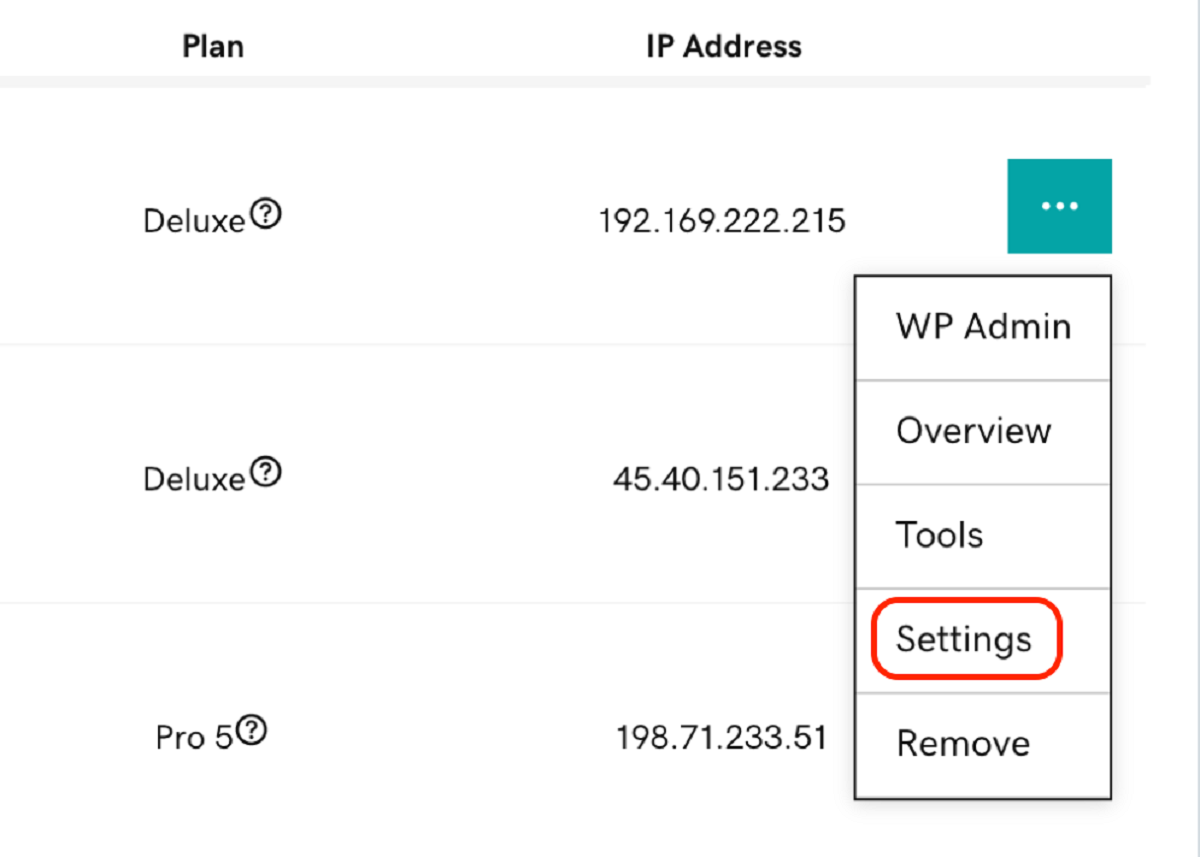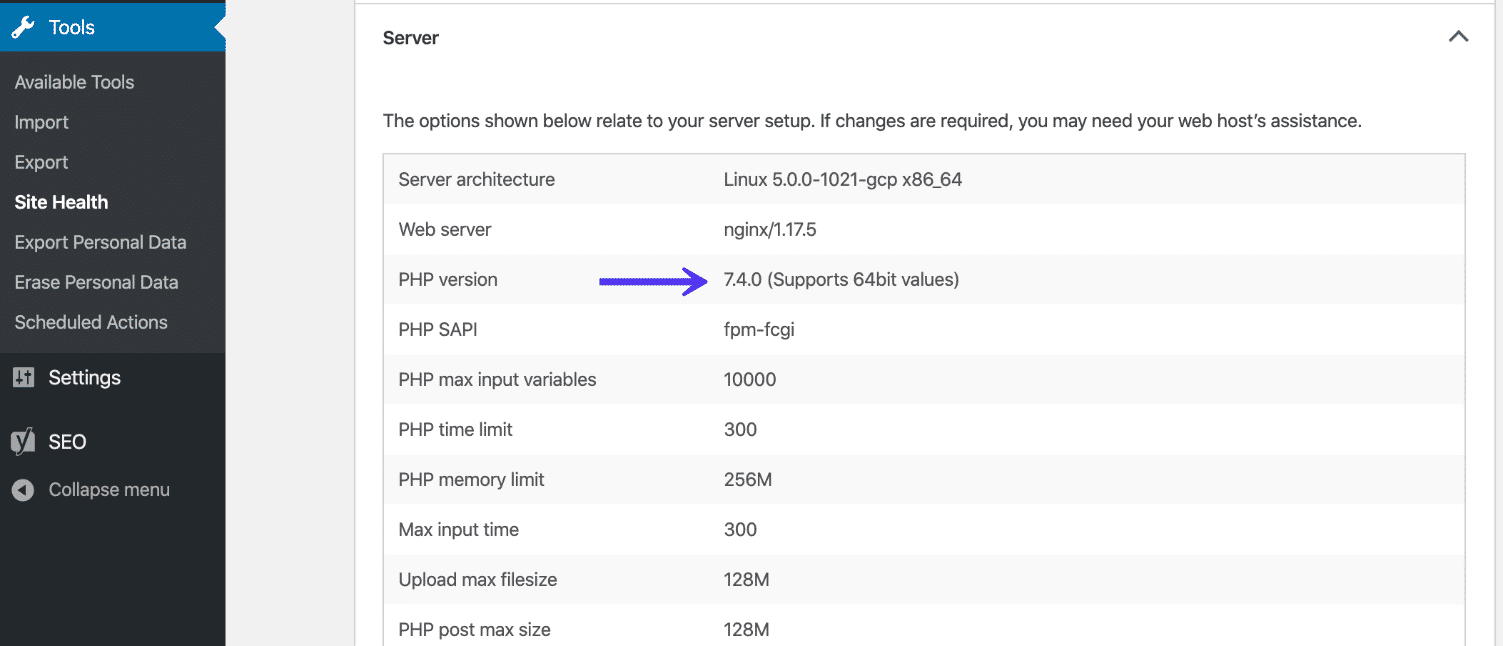What Is PHP In WordPress
PHP, which stands for Hypertext Preprocessor, is a scripting language that is widely used in web development, including WordPress. It is an integral part of the WordPress ecosystem and understanding its basics is essential for anyone looking to customize or extend their WordPress website.
PHP is a server-side scripting language, which means that it is executed on the server before the web page is sent to the user’s browser. This allows for dynamic content generation and data manipulation. Unlike static HTML, PHP enables developers to create interactive and personalized websites.
WordPress, on the other hand, is a Content Management System (CMS) that is built using PHP. It provides a user-friendly interface for managing the content of a website and utilizes PHP to handle the server-side operations. This includes processing user requests, retrieving and updating data from databases, and generating HTML output.
One of the strengths of PHP in WordPress is its flexibility and extensibility. PHP offers a wide range of built-in functions and libraries that can be seamlessly integrated into WordPress themes and plugins. This allows developers to extend the functionality of WordPress and create custom features tailored to their specific needs.
Moreover, PHP is highly interoperable with other technologies commonly used in web development, such as HTML, CSS, and JavaScript. It can interact with databases, manipulate files, and handle various types of data, making it a versatile tool for building dynamic and interactive websites.
In the context of WordPress, PHP is used to define the structure and behavior of themes and plugins. It allows developers to create template files that determine how the website looks and functions. Additionally, PHP is used to create custom functions, hooks, and filters, which add extra functionality to WordPress.
Overall, PHP plays a crucial role in powering WordPress and enables developers to create unique and customized websites. Whether you want to create a simple blog or a complex e-commerce platform, understanding the basics of PHP is essential to unlock the full potential of WordPress and take your website to the next level.
Introduction
WordPress is one of the most popular and widely used Content Management Systems (CMS) for building websites. It is known for its user-friendly interface, extensive plugin ecosystem, and customizable themes. Behind the scenes, WordPress relies heavily on PHP (Hypertext Preprocessor), a powerful server-side scripting language, to handle the dynamic aspects of website development.
In this article, we will delve into the world of PHP in WordPress, exploring its role, syntax, and capabilities. Whether you are an aspiring web developer or a WordPress enthusiast, understanding the basics of PHP in the context of WordPress is essential for harnessing the full potential of the platform.
PHP, a versatile and widely used language in web development, allows developers to interact with databases, handle form submissions, and create dynamic web pages. It acts as the backbone of WordPress, serving as the driving force behind the creation of themes, plugins, and custom functionalities.
In the following sections, we will explore the fundamentals of PHP in WordPress, including variable declaration, conditional statements, looping mechanisms, functions, and the implementation of hooks and filters. By familiarizing ourselves with these concepts, we can unlock the ability to customize and extend WordPress to suit our specific needs.
Throughout this journey, we will discuss how PHP in WordPress empowers developers to create visually appealing and interactive websites. By writing efficient and modular code, we can enhance the functionality and aesthetics of our WordPress projects.
Whether you are a beginner or an experienced developer, this article will serve as a valuable resource to deepen your understanding of PHP in WordPress. So, let’s dive in and explore the world of PHP, unlocking new possibilities to elevate your WordPress websites to the next level.
Basics of PHP
To understand PHP in the context of WordPress, it is essential to grasp the basics of the language. PHP is a server-side scripting language that is designed to create dynamic web pages and handle server-side operations. It works by embedding PHP code within HTML or combining it with other scripting languages.
One of the key features of PHP is its ability to interact with databases. With PHP, you can retrieve, update, and manipulate data from databases like MySQL or PostgreSQL. This allows for the creation of dynamic websites with dynamic content.
PHP code is enclosed within special tags . Any code written between these tags will be executed on the server before being sent to the user’s browser. This dynamic execution allows for the generation of customized content based on user inputs or database queries.
Variables in PHP are used to store and manipulate data. They are declared using the $ symbol followed by the variable name. PHP is a loosely typed language, meaning you do not need to explicitly declare the data type of a variable.
Conditional statements, such as if statements and switch statements, allow you to control the flow of your PHP code based on certain conditions. These statements enable you to execute different sections of code based on whether certain conditions are true or false.
Looping statements, like for loops and while loops, provide a way to repeat a section of code multiple times. They are useful when you need to iterate over an array or perform a set of operations a certain number of times.
PHP also supports the concept of functions, which are reusable blocks of code that perform specific tasks. Functions help in organizing code and promoting code reusability. In addition to built-in PHP functions, you can define your own custom functions to suit your specific needs.
Another important aspect of PHP in WordPress is the concept of hooks and filters. Hooks allow developers to modify or add functionality to WordPress without modifying the core code. Filters, on the other hand, allow the manipulation of data before it is displayed on the front-end.
Understanding the basics of PHP provides a solid foundation for harnessing the power of WordPress. With PHP, you can create dynamic and interactive websites, manipulate data, and extend the features and functionality of WordPress. In the following sections, we will explore these concepts in more detail, equipping you with the knowledge to create customized WordPress websites.
PHP Syntax in WordPress
When working with PHP in WordPress, understanding the syntax is crucial for writing clean and error-free code. PHP syntax follows a specific structure and set of rules that must be followed for the code to be interpreted correctly by the server.
PHP code is typically embedded within HTML markup, allowing for the dynamic generation of web pages. To begin a PHP code block, the opening tag is encountered.
Let’s consider an example of an embedded PHP code block:
html
Welcome to my website!
In the example above, the PHP code block is used to assign a value to the variable $name and output a greeting message using the echo statement. The PHP code is executed on the server, and the output is generated within the HTML markup.
It’s important to adhere to proper syntax to ensure that the code is parsed correctly. Missing opening or closing tags, misplaced semicolons, or incorrect variable naming can all lead to syntax errors and unpredictable behavior.
PHP supports a wide range of operators, including arithmetic, assignment, comparison, and logical operators. These operators enable you to perform mathematical calculations, assign values to variables, compare values, and combine multiple conditions.
For example, the following snippet demonstrates the use of arithmetic operators:
php
$x = 10;
$y = 5;
$sum = $x + $y;
$difference = $x – $y;
$product = $x * $y;
$quotient = $x / $y;
echo “Sum: ” . $sum . “
“;
echo “Difference: ” . $difference . “
“;
echo “Product: ” . $product . “
“;
echo “Quotient: ” . $quotient . “
“;
PHP also provides built-in functions for common tasks, such as manipulating strings, working with arrays, and handling dates and times. These functions can be called with specific arguments to perform specific tasks, simplifying the development process.
Understanding the syntax of PHP in WordPress allows you to write clean and efficient code. By following the appropriate structure and rules, you can ensure that your code is accurately interpreted and produces the desired results. In the next sections, we will explore variables, conditional statements, and other essential aspects of PHP in WordPress, further enhancing your ability to customize and extend WordPress websites.
Variables in PHP
Variables in PHP are used to store and manipulate data. They provide a way to temporarily hold values that can be accessed and modified throughout the execution of a script. Understanding how to declare and use variables is essential in PHP programming.
In PHP, a variable is declared by prefixing the variable name with a dollar sign ($) followed by the desired name. For example, to declare a variable named “message”, the syntax would be:
php
$message = “Hello, world!”;
Variables in PHP are loosely typed, meaning you do not need to specify their data type when declaring them. The data type of a variable is determined by the value assigned to it. PHP supports various data types, including strings, integers, floats, booleans, arrays, and objects. You can assign a value of any data type to a variable without explicitly specifying the type.
Here’s an example of assigning different data types to variables in PHP:
php
$name = “John”;
$age = 25;
$price = 10.99;
$is_active = true;
$fruits = array(“apple”, “banana”, “orange”);
You can also assign the value of one variable to another variable:
php
$greeting = “Hello, world!”;
$message = $greeting;
Variables in PHP are case-sensitive, meaning $message and $Message are treated as separate variables. It’s important to be consistent with variable naming to avoid confusion and potential errors.
PHP also provides the ability to concatenate variables using the “.” (dot) operator. This allows you to combine strings and variables together to create dynamic output:
php
$first_name = “John”;
$last_name = “Doe”;
$full_name = $first_name . ” ” . $last_name;
echo “Full Name: ” . $full_name;
In the example above, the “.” operator is used to concatenate the first name, a space, and the last name to form the full name.
Variables in PHP are not limited to holding static values. They can be modified, reassigned, and used in calculations throughout the code. This flexibility makes variables a powerful tool in manipulating and storing data as you build dynamic websites with PHP.
Understanding and utilizing variables in PHP is crucial for working with WordPress, as they allow you to retrieve, manipulate, and display dynamic content. In the next sections, we will explore conditional statements, looping mechanisms, and functions in PHP, further expanding your capabilities in customizing WordPress websites.
Conditional Statements in PHP
Conditional statements in PHP allow you to control the flow of your code based on certain conditions. They enable you to execute different sections of code depending on whether specific conditions are true or false. Conditional statements help to make your PHP code more dynamic and responsive.
The most common conditional statement in PHP is the “if” statement. The syntax for an “if” statement is as follows:
php
if (condition) {
// code to execute if the condition is true
}
The condition inside the parentheses is evaluated, and if it is true, the code block within the curly braces is executed. If the condition is false, the code block is skipped.
Here’s an example of using an “if” statement to determine whether a user is logged in:
php
$is_logged_in = true;
if ($is_logged_in) {
echo “Welcome, user!”;
} else {
echo “Please log in to access this page.”;
}
In the example above, if the variable $is_logged_in is true, the message “Welcome, user!” is displayed. If the variable is false, the message “Please log in to access this page.” is displayed.
Conditional statements can also be combined with “else if” and “else” clauses to handle multiple conditions. The “else if” clause allows you to specify an additional condition to check if the previous conditions are false. The “else” clause is used as a fallback for when none of the specified conditions evaluate to true.
Here’s an example that demonstrates the use of “else if” and “else” clauses:
php
$grade = 75;
if ($grade >= 90) {
echo “Excellent!”;
} else if ($grade >= 80) {
echo “Good!”;
} else if ($grade >= 70) {
echo “Average!”;
} else {
echo “Below Average!”;
}
In the example above, depending on the value of the $grade variable, different messages will be displayed. If the grade is 75, the message “Average!” will be echoed.
In addition to “if” statements, PHP also provides other conditional statements such as “switch” statements. The “switch” statement allows you to test a variable against multiple values and execute different blocks of code based on the matching value.
Conditional statements in PHP provide a powerful way to make your code more dynamic and responsive. By utilizing these statements, you can create logic and decision-making processes in your PHP code. Understanding and applying conditional statements in WordPress allows you to customize and control the behavior of your website based on specific conditions or user interactions.
Looping Statements in PHP
Looping statements in PHP allow you to repeat a block of code multiple times. They are essential for performing repetitive tasks, iterating over arrays or database records, and executing a set of operations a specific number of times. Looping statements provide a convenient way to automate repetitive processes and save time in PHP programming.
The most common looping statement in PHP is the “for” loop. The syntax for a “for” loop is as follows:
php
for (initialization; condition; increment/decrement) {
// code to be executed
}
The “for” loop consists of three parts: initialization, condition, and increment or decrement. The initialization sets the starting value of the loop counter, the condition is evaluated before each iteration, and the increment or decrement statement modifies the loop counter after each iteration. The code block within the curly braces is executed repeatedly as long as the condition is true.
Here’s an example of using a “for” loop to iterate over an array and display its elements:
php
$colors = array(“red”, “blue”, “green”, “yellow”);
for ($i = 0; $i < count($colors); $i++) {
echo $colors[$i] . "
“;
}
In the example above, the “for” loop iterates over the $colors array and displays each element on a new line. The loop starts with an initialization of $i as 0, continues as long as $i is less than the length of the array, and increments $i by 1 with each iteration.
Another commonly used looping statement is the “while” loop. The “while” loop continues executing a block of code as long as a certain condition remains true. The syntax for a “while” loop is as follows:
php
while (condition) {
// code to be executed
}
The code block within the “while” loop will be repeated as long as the condition is true. The condition is evaluated before each iteration.
Here’s an example of using a “while” loop to display numbers from 1 to 5:
php
$i = 1;
while ($i <= 5) {
echo $i . "
“;
$i++;
}
In the example above, the “while” loop starts with $i as 1 and continues as long as $i is less than or equal to 5. Within each iteration, the value of $i is echoed and then incremented by 1.
Looping statements are essential for performing repetitive tasks efficiently in PHP. Whether you need to iterate over arrays, perform database queries, or execute a set of operations multiple times, looping statements provide the necessary structure and control flow. Understanding and utilizing looping statements in WordPress allows you to automate processes, process large amounts of data, and create dynamic and interactive websites.
Functions in PHP
Functions in PHP are reusable blocks of code that perform specific tasks. They help to organize code, promote code reusability, and enhance the modularity of your PHP programs. Functions allow you to encapsulate a set of instructions and execute them at different points in your code or whenever needed.
To define a function in PHP, you use the “function” keyword, followed by the function name and parentheses. Any parameters that the function accepts are specified within the parentheses. The code block within the function is enclosed within curly braces.
Here’s an example of a simple PHP function that calculates the sum of two numbers:
php
function calculateSum($num1, $num2) {
$sum = $num1 + $num2;
return $sum;
}
In the example above, the function named “calculateSum” takes two parameters, $num1 and $num2. It calculates their sum and returns the result using the “return” keyword. The function can be called from anywhere in the program by passing the required arguments.
To call a function, you use the function name followed by parentheses. If the function expects parameters, you pass them within the parentheses. The returned value from the function can be stored in a variable or used directly in the program.
Here’s an example of calling the “calculateSum” function:
php
$result = calculateSum(5, 10);
echo “The sum is: ” . $result;
In the example above, the function is called with the arguments 5 and 10. The returned sum is stored in the $result variable and then echoed to the screen.
Functions can also have optional parameters with default values. These parameters can be omitted when calling the function, and their default values will be used instead.
In addition to built-in PHP functions, you can create your own custom functions to perform specific tasks in your PHP programs. Functions allow you to encapsulate complex processes into reusable, manageable units, making your code more organized, modular, and easier to maintain.
Functions are an integral part of PHP in WordPress, as they enable developers to extend and customize the features and functionality of WordPress. By defining custom functions, you can create personalized solutions tailored to your specific needs and enhance the capabilities of your WordPress websites.
Understanding and utilizing functions in PHP allows you to write more efficient and modular code. By breaking down complex processes into individual functions, you can improve code readability, promote reusability, and efficiently manage your PHP programs.
Hooks and Filters in PHP
Hooks and filters are powerful concepts in PHP that enable developers to modify or add functionality to WordPress without modifying the core code. They provide a way to customize the behavior of WordPress themes and plugins, making them incredibly flexible and extensible.
In WordPress, hooks are specific points in the execution of a program where developers can insert their own code. Hooks come in two types: actions and filters.
Actions allow you to add new functionality or modify existing functionality at specific points in the execution of WordPress. They provide a way to perform tasks such as adding new pages, executing code on page load, or sending emails when certain events occur.
Filters allow you to modify data before it is displayed on the front-end or used by other functions. Filters can be used to modify the content of posts, change the appearance of elements, or manipulate data retrieved from the database.
To use hooks, you need to define your own custom functions and hook them into the relevant action or filter. This allows your custom code to be executed at the appropriate time or modify the desired data.
Here’s an example of using an action hook:
php
function my_custom_function() {
// Perform custom actions
// …
}
add_action(‘my_custom_action’, ‘my_custom_function’);
In the example above, the custom function “my_custom_function” is hooked into the “my_custom_action” action using the “add_action” function. When the “my_custom_action” is triggered, the custom function will be executed.
Similarly, here’s an example of using a filter hook:
php
function my_custom_filter_function($data) {
// Modify the data
// …
return $modified_data;
}
add_filter(‘my_custom_filter’, ‘my_custom_filter_function’);
In this example, the custom function “my_custom_filter_function” is hooked into the “my_custom_filter” filter using the “add_filter” function. The function receives the data, modifies it, and then returns the modified data.
Hooks and filters provide a powerful way to customize WordPress themes and plugins without modifying the core code. They allow you to add new functionality, modify existing functionality, and manipulate data to tailor WordPress to your specific needs.
Understanding and utilizing hooks and filters in PHP enables you to extend the features and capabilities of WordPress, creating unique and personalized websites that meet your requirements.
Conclusion
PHP is an integral part of WordPress, providing the foundation for its dynamic and interactive features. Understanding the basics of PHP allows you to unlock the full potential of WordPress and customize it to suit your specific needs.
In this article, we explored the basics of PHP and its syntax in the context of WordPress. We learned about variables, conditional statements, looping mechanisms, functions, and the power of hooks and filters in extending WordPress functionality.
By utilizing PHP, you can create dynamic and personalized websites, interact with databases, manipulate data, and add custom functionality to WordPress themes and plugins.
With a strong grasp of PHP, you can create custom themes, build plugins, and tailor WordPress to meet your specific requirements. You can automate repetitive tasks, manipulate data, and create interactive user experiences.
Whether you are a beginner or an experienced developer, understanding PHP in the context of WordPress is essential. It opens up a world of possibilities and allows you to shape your website according to your creative vision.
So, dive into PHP, experiment with the concepts explored in this article, and continue learning and exploring the rich ecosystem of WordPress development. With PHP as your foundation, you can take your WordPress websites to new heights of customization and functionality.







